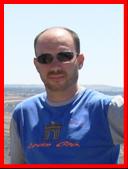|
Research |
|
1. Dye sensitised solar cells (DSC) (Grätzel cells) |
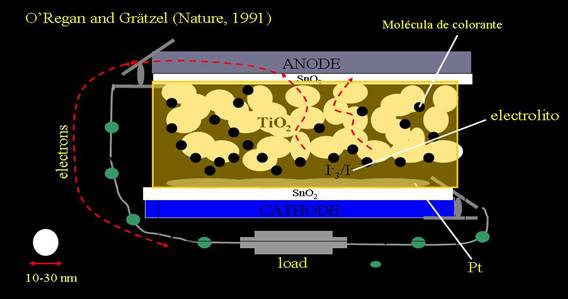
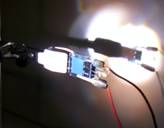
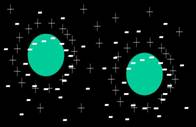
|
NANOCRYSTALLINE SOLAR CELLS |
|
CHARGED COLLOIDAL SYSTEMS |
|
Las células solares nanocristalinas o nanoestructuradas de colorante, también conocidas como “Células Grätzel” o células DSC (“Dye Solar Cell”), se construyen a partir de suspensiones coloidales de un óxido de amplio salto de banda (TiO2, ZnO) que actúa como conductor electrónico, un colorante orgánico u órgano-metálico que hace las veces de captador de la luz solar, y un electrolito que contiene un par redox (I3-/I-) y que permite el transporte de huecos. Debido a la sencillez de fabricación y a los materiales de bajo coste que emplea, estos dispositivos fotovoltaicos se han convertido desde su aparición en la década de los 90 en una alternativa prometedora frente a las células solares fotovoltaicas convencionales. |
|
Research activities on DSCs: |
|
(1) Theory, simulation and modelization of DSC and analogous devices |
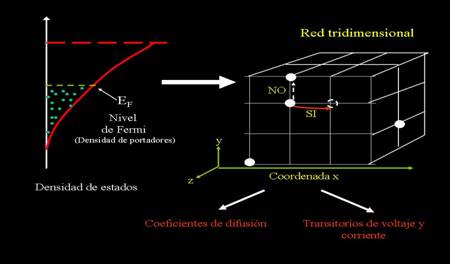
|
Illustration of the CTRW, (“Continuous Time Random Walk”) simulation of charge transport through nanocrystalline networks. |
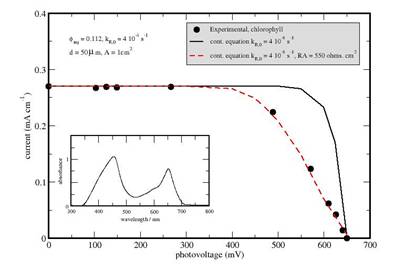
|
· Continuous time random walk simulation of short-range electron transport in TiO2 layers compared with transient surface photovoltage measurements. I. Mora-Seró, J. A. Anta, G. García-Belmonte, T. Dittrich y J. Bisquert , Journal of Photochemistry and Photobiology A. 2006, 182, 280 · Charge transport model for disordered materials: application to sensitised TiO2, J. A. Anta, J. Nelson y N. Quirke, Phys. Rev. B. 2002, 65, 125324 · Models of Electron Trapping and Transport in Polyethylene: Current-Voltage characteristics. J. A. Anta, G. Marcelli, M. Meunier y N. Quirke, J. Appl. Phys. 2002, 92, 1002 |
|
Illustration of the output of a macroscopic model based on the solution of the continuity equation with density dependent difussion and recombination constants.
Here we see the result of the fitting and the fitting parameters for a cell sensitised with chlorophyll
|
|
A Numerical Model for Charge Transport and Recombination in Dye-Sensitised Solar Cells. J. A. Anta, F. Casanueva and G. Oskam. J. Phys. Chem. B. 2006, 110, 5372 |
|
(2) Experimental studies on DSCs |
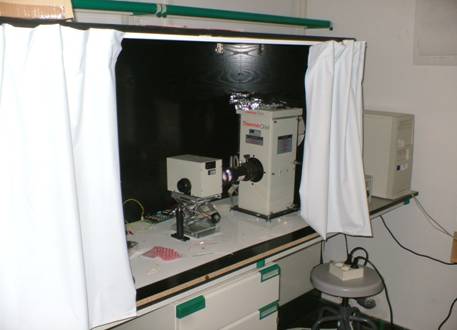
|
Experimental benchmark for solar cell characterization, Xe lamp, monochromator, potenciostat, etcc. |
|
Experimental techniques |
|
1. IV curves 2. IPCE (spectral quatum efficiencies) 3. OCVD (Open Circuit Voltaje Decay) |
|
Research interests |
|
Alternative Semiconductor materials |
|
Alternative dyes |
|
Alternative electrolytes |
|
ZnO |
|
Organic dyes Natural dyes |
|
Protic ionic liquids |
|
To learn more: |
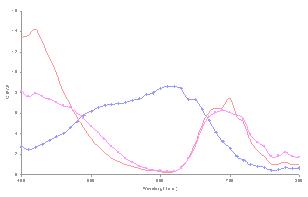
|
anthocyanine |
|
chlorophyll |
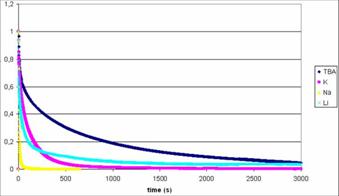
|
Example: IPCE curves for different dyes extracted from natural sources |
|
Example: Open circuit voltaje decays for different electrolyte compositions |
|
2. Charged colloidal systems |
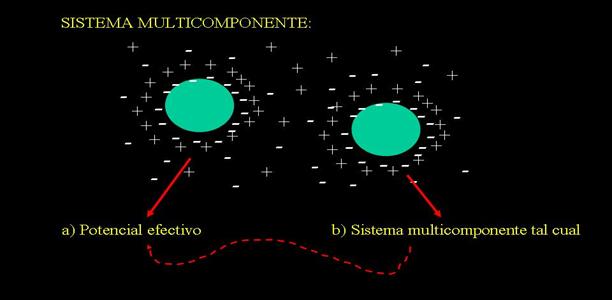
|
Charged colloidal systems pose a very interesting problem from the statistical mechanics point of view since they are a very assymetric mixtures where very different length and time scales are envolved, as well as long-range coulombic forces.
|
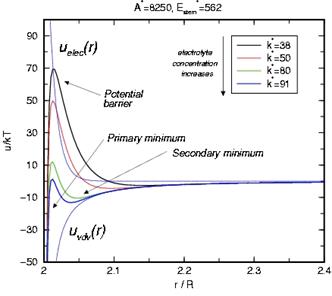
|
DVLO POTENTIAL |
|
RHNC theory MONOCOMPONENTE
|

|
Prediction of secondary minimum coagulation |

|
· Integral equation prediction of reversible coagulation in charged colloidal suspensions, V. Morales, J. A. Anta y S. Lago, Langmuir, 2003, 19, 475 · Secondary minimum coagulation from Statistical mechanics methods, M. Cortada, J. A. Anta y J.A. Molina-Bolívar, J. Phys. Chem. B. 2007, 111, 1110 |
|
(A) |
|
(B) |
|
Colloids + ions
|
|
MULTICOMPONENT RHNC THEORY |
|
CGHNC THEORY
|

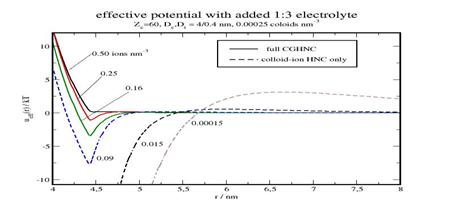
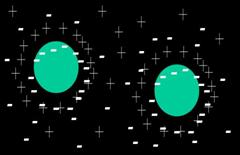
|
EFFECTIVE POTENTIALS AND DOUBLE LAYER STRUCTURES |
|
· Partially converged integral equations for charged colloidal suspensions with added salt , J. A. Anta, J. Phys: Condens. Matt , 2005, 17, 7935 · Integral Equation Studies of charged colloids: non-solution boundaries and bridge functions, J. A. Anta, F. Bresme and S. Lago. J. Phys: Condens. Matt , 2003, 15, S3491 · Self-consistent effective interactions in charged colloidal suspensions, J. A. Anta and S. Lago, J. Chem. Phys. 2002, 116, 10514 |
|
Research group in UPO: · Juan Antonio Anta · Elena Guillén Rodríguez (PhD student) |
|
Juan Antonio anta |
|
Área de Química Física Departamento de Sistemas Físicos, Químicos y Naturales Crta. de Utrera km. 1 41089 Sevilla |

